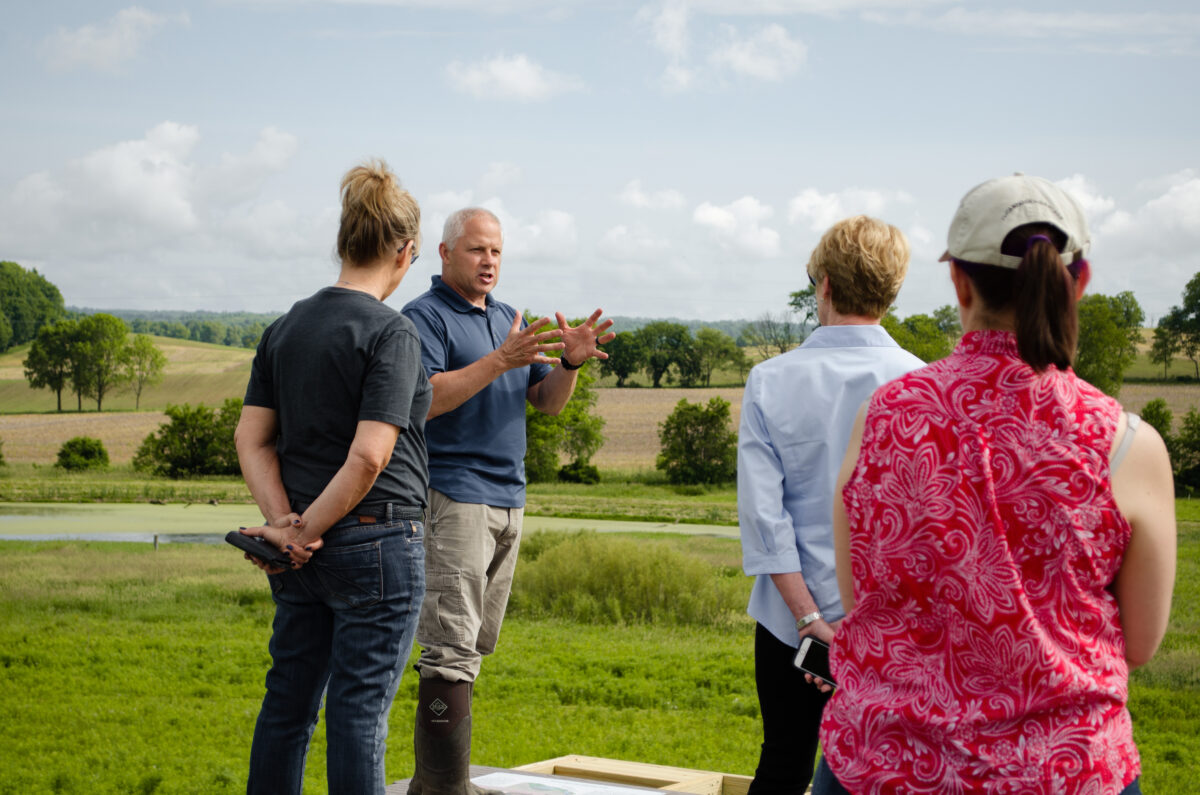Honeybees danced earlier this year between thousands of goldenrod flowers in a 100-acre plot just outside Granville. It’s rolling land thick with native grasses, Queen Anne’s lace, young maples, and cattail-rimmed wetlands. This place is the Ohio that once was.
The native prairie immediately stands apart from central Ohio’s corn and soybean fields, many of which are giving way to housing, commercial, and industrial development. If not for Granville’s Intermediate School sitting at the edge of the plot, the space would look entirely wild, untouched.
Quite the opposite is true. From a flooded cornfield to a construction site, the land spent more than a century being torn apart before it could soften back into its natural state – with the help of Granville students and a particularly creative teacher.
This circularity was not without a lot of effort. It’s easy to drive by the Granville Land Lab without realizing that high school seniors brainstormed the project, fourth graders planted the hickories, and, nearly a decade later, one of the first students involved in the project married her husband among the wildflowers she persuaded the school board to allow.
This conservation area, research field, community park and classroom is the largest K-12 outdoor education center in Ohio, according to its website. The Land Lab has grown to almost 100 acres since the first 43 acres of ground were restored in 2014.
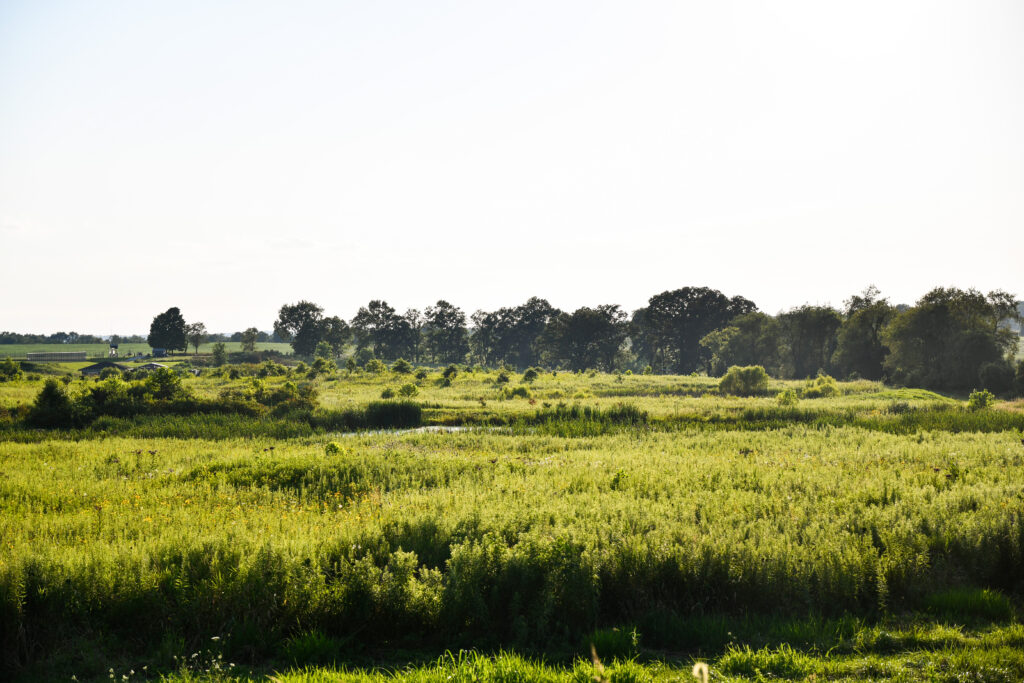
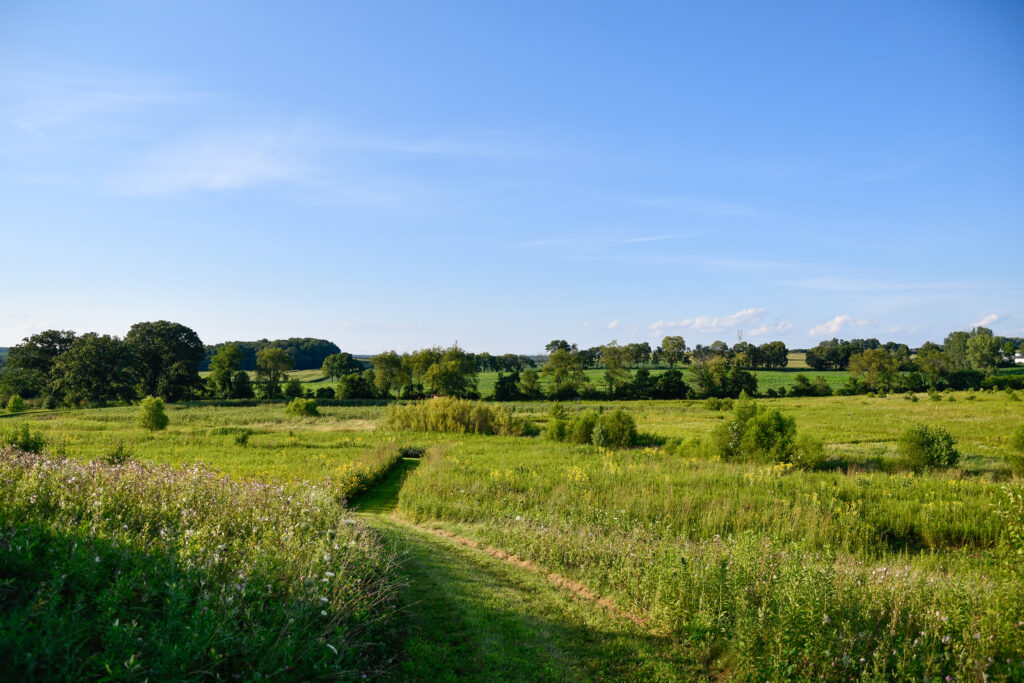
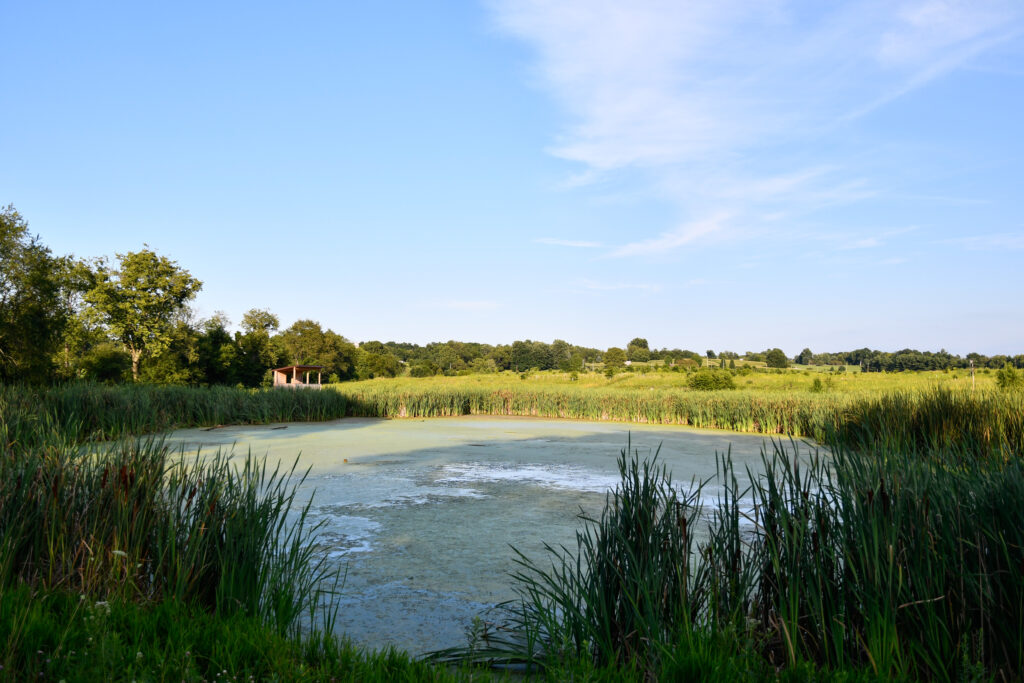
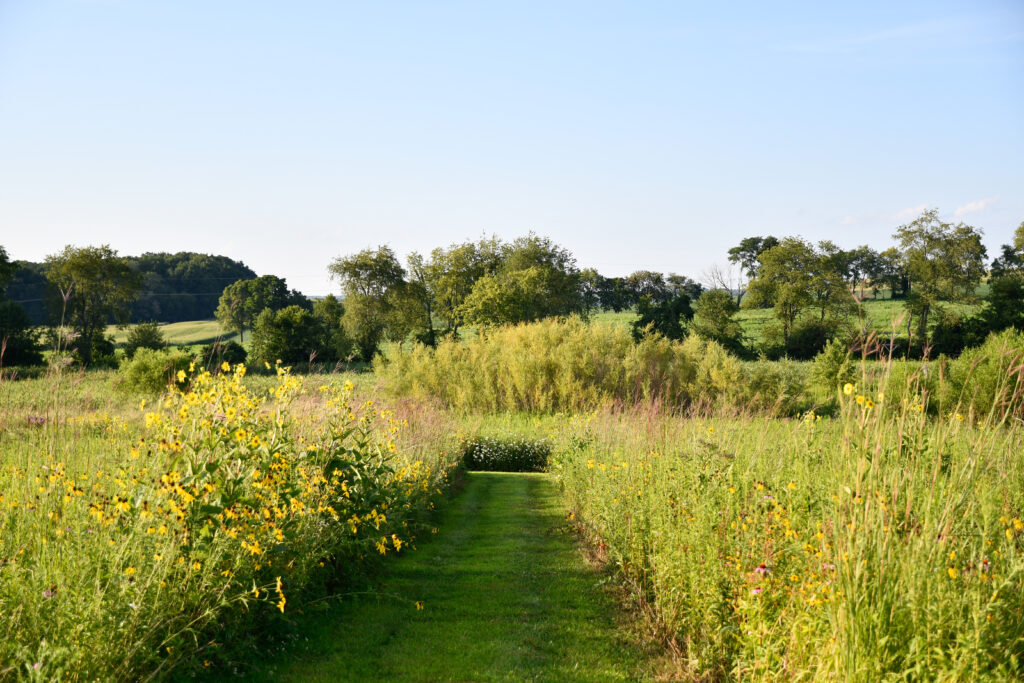
In the last decade, the space has drawn butterflies, birds, and birdwatchers from across the country, as well as biologists, nearby Denison University students, and Granville school district classes in a variety of subjects. From providing inspiration for poetry classes to being the ultimate hands-on ecology lab, and even a collection site for the school district dining halls’ maple syrup, the Land Lab has changed the landscape of Granville and its school system.
Brent Sodergren, the Ohio state coordinator for the U.S. Department of Fish and Wildlife, sets Granville’s project far above others he’s been involved with.
“The Land Lab in Granville is probably the marquee example” of schoolyard habitats providing such high value for students in the country. “I doubt that you would find a project that is more diverse – more inclusive – anywhere,” Sodergren says.
Now home to thousands of wildlife species, meticulously mowed hiking trails, and a steady stream of families on morning walks, the Land Lab emerged from the very corn fields from which it stands apart today.
While farmland is hardly considered a boost for biodiversity, even green space steeped in pesticides and herbicides is changing rapidly as commercial development grows in central Ohio.
Among the latest is one of the most significant: Intel, the computer chip manufacturer, is converting corn and soybean fields into a campus that it says will become the largest factory complex of its kind in the world. The factory site is 10 miles west of the Land Lab.
Intel expects to employ at least 3,000 people on this land – 1,000 acres that once looked just as the restored Land Lab looks now – woodland and prairie that settlers turned into farmland.
Jim Reding, Granville High School science teacher and the mentor of students who started the land lab, believes that the project is now more important than ever.
“As we lose areas that are natural and they become more industrialized, the protected and restored areas become even more valuable,” he says.
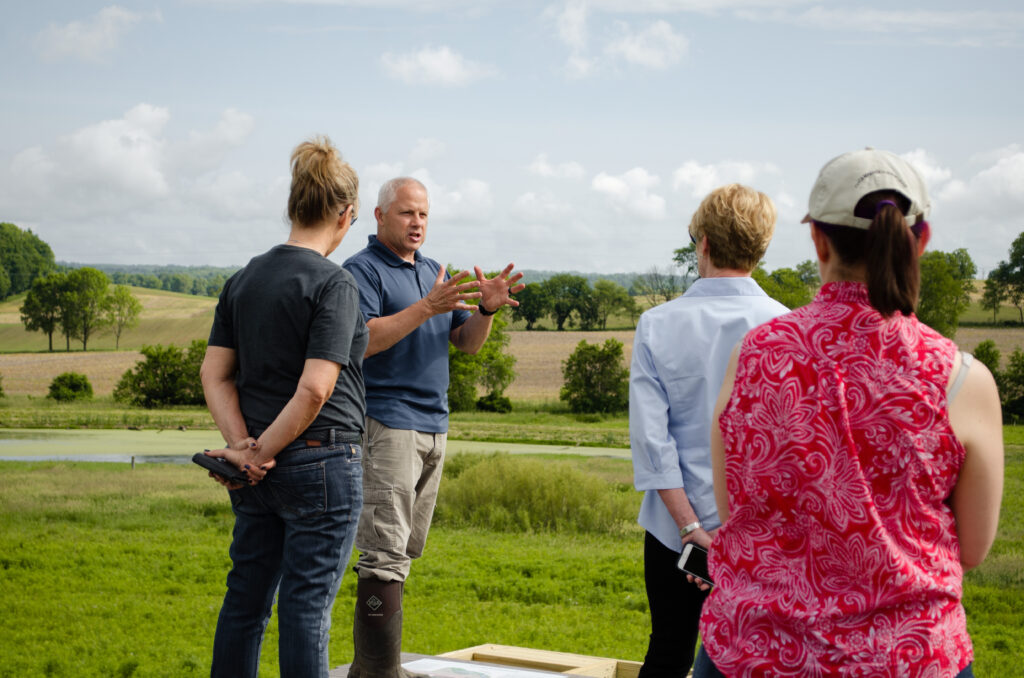
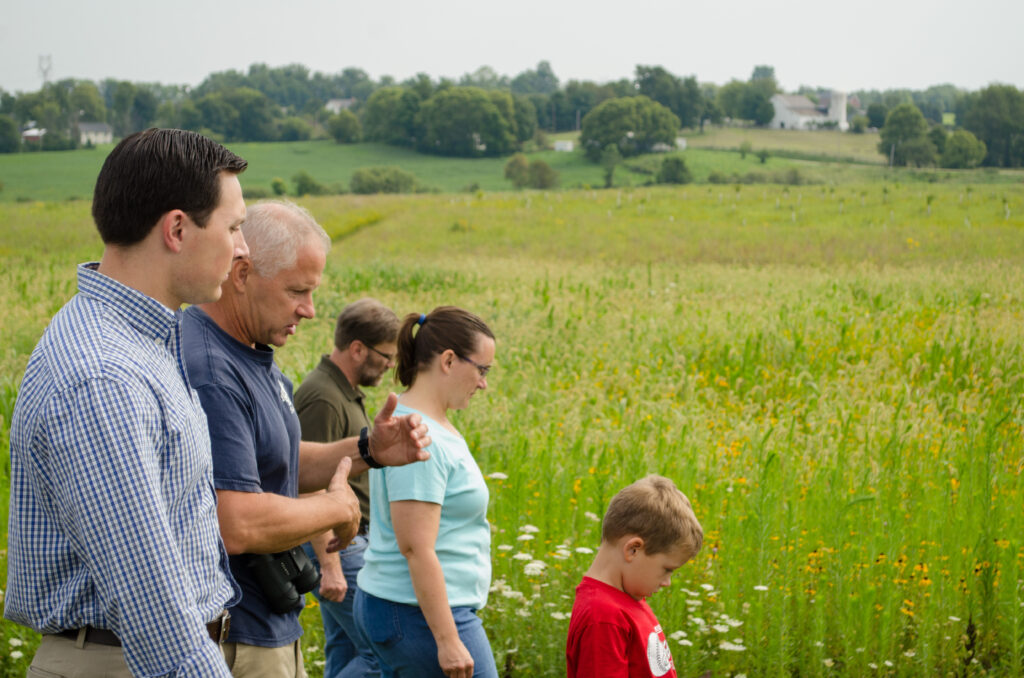
Natural habitats are fewer and farther between – a checkerboard landscape, and without enough connected green spaces to move through, wildlife is threatened, Reding says. In this sense, the Land Lab is an oasis.
Projects like the Land Lab help retain these green-space connections.
Reding was thrilled to begin teaching Advanced Placement environmental science in 2004. As the class began, however, he found his students more overwhelmed with a doomsday attitude within environmental science than they were excited about the subject. In the next few years, he incorporated examples of ways students could do something about climate change.
Talking about what they could do wasn’t enough for some students.
“One Friday afternoon, as we were wrapping up a unit, a young lady raised her hand and said, ‘Mr. Reding, if this is such a good idea, why aren’t we doing it?’” Reding recalls. “I was taken aback and started mentioning the examples we’d talked about, and she goes, ‘No, no; that’s not what I mean. I mean, why aren’t we doing it?’”
Out of that moment before the last bell on a Friday, Reding’s “take action” projects were born. Every year since then, his classes come up with hands-on projects toward conservation and biodiversity efforts. The Land Lab emerged as one of these projects less than a decade later.
“Some of the projects were big, some of them were small, but they were all empowering,” Reding says.
While Reding has covered his classroom with knick-knacks in every corner, with a sea sponge holding his pencils and water bubbling in the fish tanks that cover his lab benches, the lab he prefers is outside.
The Granville Intermediate School, home to fourth through sixth graders, was built in 2002 in a field on the northwest edge of the village, a decision that drew criticism at the time from parents hoping to see their kids walk to school. The large plot of former farmland on which it sits originally was to include another school building, but a group of high-school seniors derailed that idea when they came to the school board in 2013 with plans for the Land Lab.
The proposal started as a five-acre wetland project, since the students were able to build only that which they could secure funding to build. But early in the planning of the project, Sodergren, of the U.S. Fish and Wildlife office, entered the conversation and offered funding to go bigger. He quickly got his hands dirty alongside the students, and his help allowed them to increase the planned acreage nearly ninefold.
“[The students used] the concepts from Jim Reding’s classrooms to say, ‘Hey, what was historically here? What can we put here?’ I challenged them with coming up with a plan, and I put together a plan as well, and the plans we came up with were really really close,” Sodergren says.
Dustin Braden, 24, is a native of Granville, and during his senior year in 2017, he worked alongside other students on the grant proposal for the two most recent phases of the Land Lab. Years later, he says, his experience with the Land Lab has been instrumental in the ways he approaches learning.
“We’re the first generation that’s been online so much of our lives, and we’re scared to talk on the phone, or to really put ourselves out there,” Braden says. “Something the Land Lab taught me in the midst of that is that it’s okay to fail, and it’s okay to publicly try in that process of failing. I think it did that for a lot of us students.”
“It’s like, this is something I’m going to throw myself behind; I’m going to publicly support this project, and be a leader on it, and it might not be successful. It was the first time we were told as students that, actually, failing is not bad,” he says.
Now, as Reding tours the site, he can barely contain his excitement for the space and what his students accomplished. He walks quickly, and he is always pointing at something. At the Land Lab, there’s so much to take in.
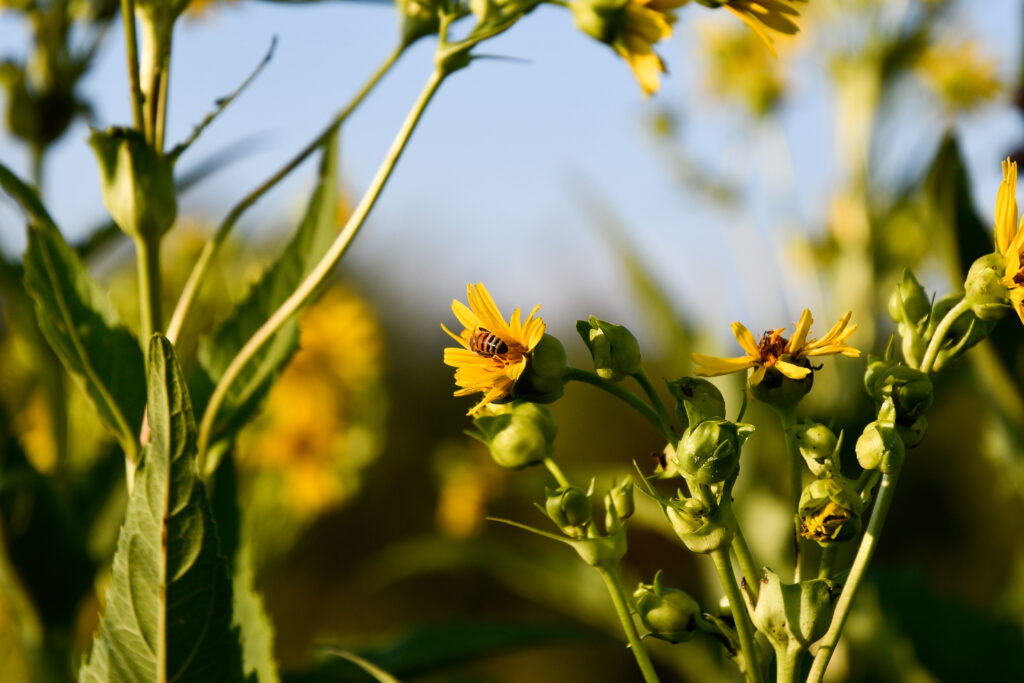
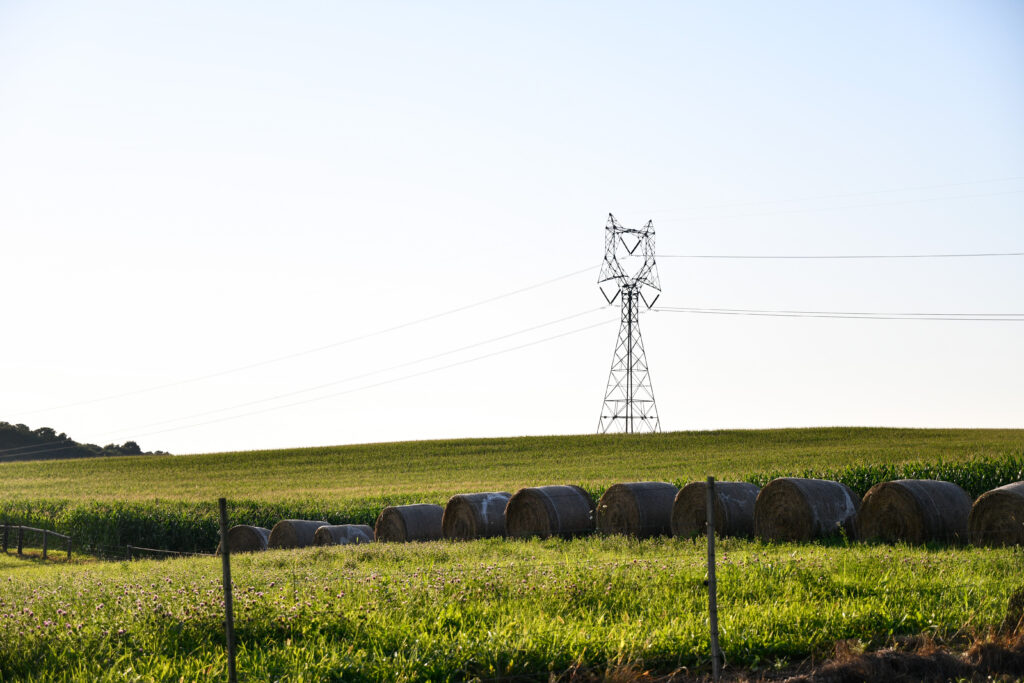
To the casual observer, the space might look like any other restored habitat, but Reading quickly shows that it is much more.
On a scientific level – the space’s foremost purpose – the Land Lab has every habitat component you’d find in this part of Ohio. Building a wetland was among the first steps in the project, and within a weekend, after an excavator and bulldozer broke up the field’s tightly packed soil, water seeped into the naturally low land and a wetland was reborn, taking over the space it had occupied centuries before.
In late summer, the Land Lab smells sweet as warm country air weaves between wildflowers and native grasses. In recent years, students have harvested these grasses for seeds that help restore thousands of acres of land in other sites, Sodergren says.
Most springs, if temperamental Ohio weather allows, the Granville Township Fire Department sets the land ablaze. The controlled burn has the same effects as a natural prairie fire, creating a highly nutrient-dense environment, fueling the natural restoration of the land and allowing nature to cycle and regrow in its innate pattern.
The Land Lab is not only an environmental oasis, but it also has become one for humans, bringing people together from within the Granville school district and from across the country. Reding’s bigger “take-action projects,” such as the Land Lab, have turned into legacy projects that are passed from one class to another, year after year.
“Really, the kids that started the idea never planted a seed,” Reding explains.
The students who brainstormed and wrote the grant for the Land Lab never got to roll up their sleeves and plant anything, but when a student from that first class came home with his fiancé to find wedding venues, the first thing he did was show her the Land Lab.
In another few decades, Reding hopes, the 4th graders who planted the shagbark hickories can bring their family back and say, “That’s my tree.”
Five years after his high school graduation, Braden is working on a master’s degree in geography and spatial science, the product of years dedicated to environmental science and a drive to fight climate change. This passion was fueled by the Land Lab, and he’s still as proud of the project as ever.
“Every six months, I can go out to the Land Lab, and I’ll see one or two new projects popping up. That’s the most exciting thing for me, because I know that I got to be the base that these students are building on, and I also know that they’re building an even stronger base for future students to engage with it. Beyond that, I know that behind every project is a group of kids who got that same opportunity to be empowered that I had. It’s been so instrumental in my career since,” he says.
Beyond its environmental, economic, and educational benefits, the Land Lab has encouraged students and the Granville community. It has shown that a small town in the rural Midwest can make an impact in the fight against climate change, connect students across generations, and put into action something Reding tells all of his classes at the beginning of the school year.
“I tell them we need you to be leaders now, not in 20 years. I think [the Land Lab] has proved to them that they can be leaders now. I think it’s also proved that to the community. We don’t have to wait for them to be at the table,” Reding says.
Sophie LeMay writes for TheReportingProject.org, the nonprofit news organization of The Denison University Journalism Program, which is sponsored in part by the Mellon Foundation.

